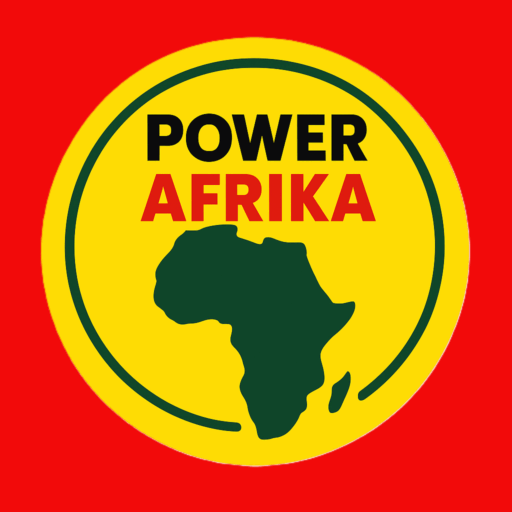
Across the vast expanse of Africa, where 840 million youth pulse with potential, a glaring paradox persists: the continent remains a powerhouse of raw materials—gold, oil, cobalt, and cocoa—yet struggles to establish robust manufacturing industries. On April 16, 2025, as global economies evolve, Africa’s inability to industrialize isn’t just a missed opportunity; it’s a story of deliberate discouragement and sabotage, rooted in history and perpetuated by modern policies. From the Democratic Republic of Congo’s mineral-rich mines to Nigeria’s oil fields, the narrative is the same: Africa exports unprocessed resources while importing finished goods, leaving its youth sidelined from the economic growth they deserve.
A Historical Legacy of Exploitation
The roots of this crisis stretch back to the colonial era, when European powers carved up Africa for profit. From the 15th century onward, nations like Britain, France, and Belgium exploited Africa’s resources—rubber from the Congo, diamonds from South Africa, and cotton from Egypt—establishing extractive economies designed to feed European industries, not African ones. Post-independence, this legacy lingered as newly formed governments inherited infrastructure geared toward export, not production. The Berlin Conference of 1884-1885 formalized this division, ensuring Africa’s role as a raw material supplier, a blueprint that modern policies have only reinforced. Critics argue this wasn’t accidental but intentional, a strategy to keep Africa dependent and underdeveloped.
The Policy Trap: World Bank, IMF, and Aid Donors
Today, the sabotage continues through the policies of the World Bank, IMF, and other aid donors, which explicitly inhibit industrialization. Structural Adjustment Programs (SAPs) imposed in the 1980s and 1990s forced African nations to liberalize trade, cut subsidies for local industries, and prioritize debt repayment over domestic manufacturing. For instance, Ghana’s SAPs in the 1980s dismantled textile factories to favor imported goods, while Kenya’s coffee sector saw similar deindustrialization. These policies, often cloaked as economic stabilization, flooded African markets with cheap foreign products, undermining local producers. Critics contend that these institutions, dominated by Western interests, maintain a neocolonial grip, ensuring Africa remains a raw material hub rather than a manufacturing powerhouse.
The Youth Crisis: 840 Million Voices Silenced
With 840 million youth—60% of Africa’s population under 25—this lack of manufacturing hits hardest at the continent’s future. In countries like Uganda, where youth unemployment hovers around 13%, the absence of industrial jobs forces millions into informal sectors or migration. South Africa’s manufacturing sector, once a regional leader, has shrunk from 20% of GDP in the 1980s to 12% today, leaving young people with few opportunities beyond mining or agriculture. Yet, this youth bulge could be Africa’s greatest asset. In Ethiopia, the government’s push for industrial parks has created 100,000 jobs since 2019, showing what’s possible when manufacturing is prioritized. The contrast is stark: while external policies discourage industry, African youth are ready to innovate if given the chance.
PowerAfrika’s Take: Time to Manufacture, Not Export
At PowerAfrika, we see this as a call to action, not just a lament. Africa’s reduction to a raw material supplier is a deliberate legacy that can be overturned, starting with its youth. While the World Bank and IMF may frame their policies as aid, the data—decades of stalled industrial growth—suggests a deeper intent to keep Africa subservient. We subtly urge African leaders and communities to reject this narrative, investing in manufacturing to harness the energy of 840 million young minds. This resonates with our mission to reclaim African dignity, much like our petition to rename Kotoka International Airport, a step toward healing Ghana’s historical wounds. Join us in this movement at https://powerafrika.com/rename-kotoka-airport/.
Tools to Amplify Africa’s Manufacturing Revolution
Africa’s youth can lead this manufacturing renaissance, and PowerAfrika has the tools to help. Create a compelling video showcasing young innovators building factories with Renderlion, an AI video generator that crafts visuals to inspire change without slowing your site (https://renderlion.com/?via=asafo). Share their stories on social media with AiReelGenerator, creating fast-loading reels to rally support across the continent (https://aireelgenerator.com?refid=). Aspiring to lead this movement? The MBL program offers resources to develop leadership skills, empowering you to advocate for African manufacturing (https://philjohnson1.podia.com/a/2efwx). These tools can turn your vision into action, inspiring a new generation of African leaders to drive the manufacturing revolution forward.
Little Known Facts About Manufacturing in Africa
- Colonial Blueprint: The Berlin Conference allocated 90% of Africa’s land to European powers, setting the stage for an extractive economy that persists today.
- SAP Impact: Ghana lost 70% of its textile industry jobs between 1983 and 1993 due to World Bank-mandated SAPs.
- Youth Potential: Nigeria’s youth population could support a $500 billion manufacturing sector by 2030 if industrial policies shift, according to the African Development Bank.
